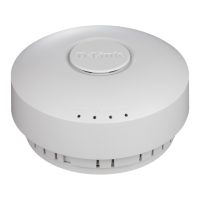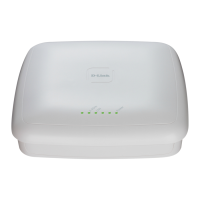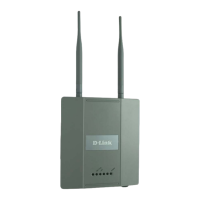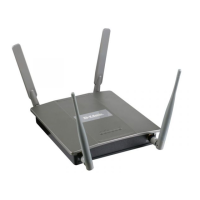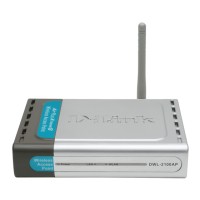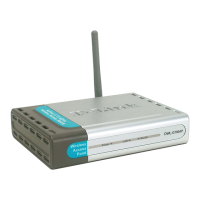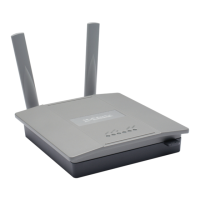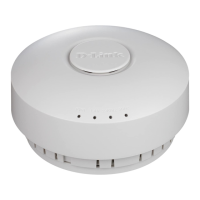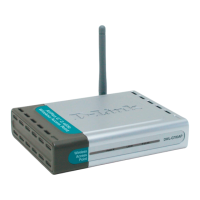
Do you have a question about the D-Link DWL-6610AP and is the answer not in the manual?
| 2.4 GHz | Yes |
|---|---|
| Networking standards | IEEE 802.11a, IEEE 802.11ac, IEEE 802.11b, IEEE 802.11g, IEEE 802.11n, IEEE 802.1Q, IEEE 802.3, IEEE 802.3ab, IEEE 802.3at, IEEE 802.3u |
| Ethernet LAN data rates | 10, 100, 1000 Mbit/s |
| Maximum data transfer rate | 1200 Mbit/s |
| Certification | CE EN 301 893 V1.7.1 (2012-06) (DFS/TPC) EN 300 328 V1.8.1 (2012-06) FCC IC cUL LVD UL2043 C-Tick BSMI NCC |
| Housing material | Plastic |
| Antenna gain level (max) | 6.5 dBi |
| Security algorithms | AES, HTTPS, SSH, TKIP, WPA, WPA2 |
| Output current | 2 A |
| Output voltage | 12 V |
| Power consumption (max) | 16.6 W |
| Storage temperature (T-T) | -20 - 65 °C |
| Operating temperature (T-T) | 0 - 40 °C |
| Operating relative humidity (H-H) | 10 - 90 % |
| Ethernet LAN (RJ-45) ports | 1 |
| Package depth | 235 mm |
| Package width | 243 mm |
| Package height | 90 mm |
| Package weight | 1065 g |
| Pallet width | 1200 mm |
| Pallet length | 1100 mm |
| Pallet height (air) | 1235 mm |
| Pallet height (sea) | 2060 mm |
| Pallet gross weight (air) | 200628 g |
| Pallet gross weight (sea) | 332474 g |
| Quantity per pallet (air) | 144 pc(s) |
| Quantity per pallet (sea) | 252 pc(s) |
| Shipping (inner) case width | 343 mm |
| Shipping (inner) case height | 275 mm |
| Shipping (inner) case length | 565 mm |
| Shipping (inner) case weight | 7297 g |
| Shipping (inner) case net weight | 6390 g |
| Number of cartons per pallet (air) | 24 pc(s) |
| Number of cartons per pallet (sea) | 42 pc(s) |
| Quantity per shipping (inner) case | 6 pc(s) |
| Harmonized System (HS) code | 85176990 |
| Width | 158.8 mm |
|---|---|
| Height | 69.4 mm |
| Weight | 500 g |
Target audience for the manual, including system administrators and support personnel.
Outlines the structure of the manual, detailing sections and their respective page numbers.
Describes initial network connection steps for remote management via Telnet, Web, or SNMP.
Details the process of powering on the switch and navigating the POST and Boot menu.
Lists and explains tasks performable via the Boot menu after POST completion.
Explains the three management methods: Web UI, CLI, and SNMP.
Provides steps for accessing the switch's web interface and logging in.
Explains how to access and use the switch's text-based command-line interface.
Details how to configure SNMP for network device management, including user profiles and security.
Page for configuring and viewing general device information, including system name, location, and contact.
Controls the IEEE 802.3x flow control mode for the switch, affecting packet transmission during congestion.
Provides information about cards installed in switch slots and their configuration.
Configures Power over Ethernet (PoE) features, including system usage thresholds and port management.
Manages the network interface's IP information, allowing configuration of IP addresses and subnet masks.
Manages user accounts, assigning passwords, and setting security parameters for default and additional accounts.
Configures login lists that specify authentication methods for switch or port access.
Configures Denial of Service (DoS) control by classifying and blocking various DoS attacks.
Selects network traffic for analysis by a network analyzer, done for specific ports as source or destination.
Supports accurate network device clock time synchronization using the Simple Network Time Protocol (SNTP).
Resets the system configuration to the factory default values.
Makes submitted changes persistent across a system reset by saving them to non-volatile memory.
Downloads image, configuration, CLI banner, or SSH/SSL files from a TFTP server to the switch.
Maintains two versions of software (active and backup) for reduced downtime during upgrades/downgrades.
Enables automatic switch configuration upon power-on by downloading a configuration file from a TFTP server.
Maintains a list of MAC addresses to determine how to forward received frames.
Adds Virtual LAN (VLAN) support, partitioning the network into logical segments for administration and security.
Defines VLAN groups stored in the VLAN membership table, supporting up to 3965 VLANs.
Provides a tree topology for any bridge arrangement, eliminating loops and ensuring one path between end stations.
Monitors DHCP messages to filter harmful messages and build a binding database for authorized traffic.
Allows stations on an 802 LAN to advertise capabilities and physical descriptions for system topology identification.
Rejects invalid ARP packets, preventing man-in-the-middle attacks by poisoning ARP caches.
Enables clients and servers to exchange BootP/DHCP messages across different subnets.
Forwards configured UDP broadcast packets to a particular IP address for server reachability on non-local subnets.
Associates Layer 2 MAC addresses with Layer 3 IPv4 addresses for manual or dynamic ARP configuration.
Enables routing and configures port or VLAN IP addresses for Layer 3 routing and inter-subnet packet routing.
Provides creation, deletion, and management of dynamic loopback interfaces for stable IP addressing.
Enables and configures the Routing Information Protocol (RIP) for routing information propagation.
Identifies operational routers on the subnet through Router Advertisements and Router Solicitations.
Allows configuration of the routing table and route preferences, including static routes and RIP.
Configures VLAN routing interfaces to support traffic on a VLAN as if it were a router port.
Handles default router failures by electing a backup router and minimizing black hole periods.
Explains Quality of Service (QoS) features for prioritizing traffic, including Class of Service and Differentiated Services.
Defines classification actions and rules for specific ports, composed of access control entries (ACEs).
Consists of rules matched sequentially against packets to define permit/deny actions based on MAC criteria.
Assigns ACLs and interfaces, prioritizing ACLs that are bound to each interface.
Enables per-port security by allowing only packets with allowable source MAC addresses to be forwarded.
Enables secure HTTP for encrypted communication over SSL/TLS connections, protecting against eavesdroppers.
Configures secure command-line based communication using Secure Shell (SSH) for remote management.
Blocks clients from network access until user verification is established, supporting guest and authenticated users.
Configures portals to accommodate guest and authorized users, managing local user databases.
Provides RADIUS servers for per-user authentication and accounting, offering centralized security.
Manages port security parameters, including 802.1X, supplicants, and authentication servers.
Provides TACACS+ client support for centralized security and validation of users accessing the device.
Lists components of the Unified Wired and Wireless Access System, including switches and access points.
Monitors status and statistics for the D-Link Unified Switch network, including APs, clients, and peer switches.
Collects and displays global status and statistics for APs managed by the switch and associated peer switches.
Provides tools for managing access points, including reset, RF management, software download, and provisioning.
Configures radio frequency settings like channel plan and power levels to optimize WLAN traffic and minimize interference.
Sets security mechanisms for APs, recommending WPA/WPA2 for network protection against unauthorized clients.
Allows adding managed APs to a cluster using over-the-air WDS links, simplifying infrastructure and enabling roaming.
Helps physically locate APs and wireless clients using triangulation algorithms and floor plan visualization.
Configures rules for VAP or radio operational times, automating enabling/disabling for security and power saving.
Provides graphical display of switches, APs, and clients using a Java applet for real-time network visualization.
Provides step-by-step examples for creating VLANs, assigning ports, and setting default VLANs.
Example of configuring Unified Wired and Wireless Access System software to support VLAN routing.
Example of enabling IEEE 802.1s Multiple Spanning Tree (MST) protocol and setting bridge priority.
Example of configuring the default virtual access point (VAP) profile on the switch for wireless network access.
Example of setting up a class for UDP traffic to prioritize voice traffic and expedite it on the outbound side.
Describes configuring WDS-Managed settings on APs and switches to extend WLAN to new buildings.
Example of deploying a wireless network using WPA2-Enterprise encryption and dynamic VLAN assignment via RADIUS.
Describes features for automatic optimization of wireless traffic, including channel selection and power adjustment.
Explains the use of Wireless Intrusion Detection System (WIDS) and WIPS functions to protect the wireless network.
